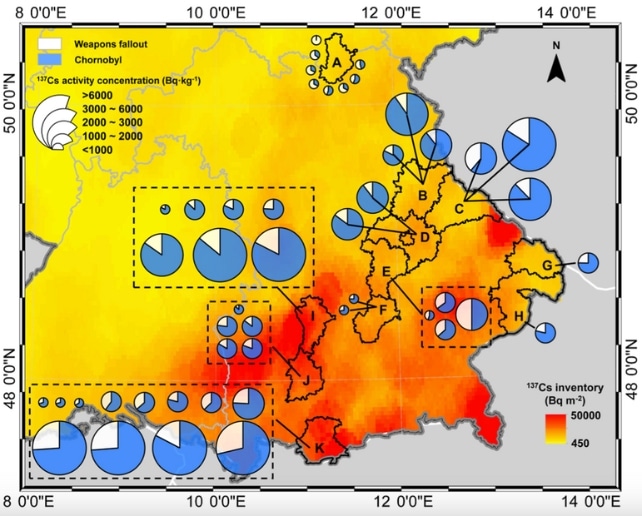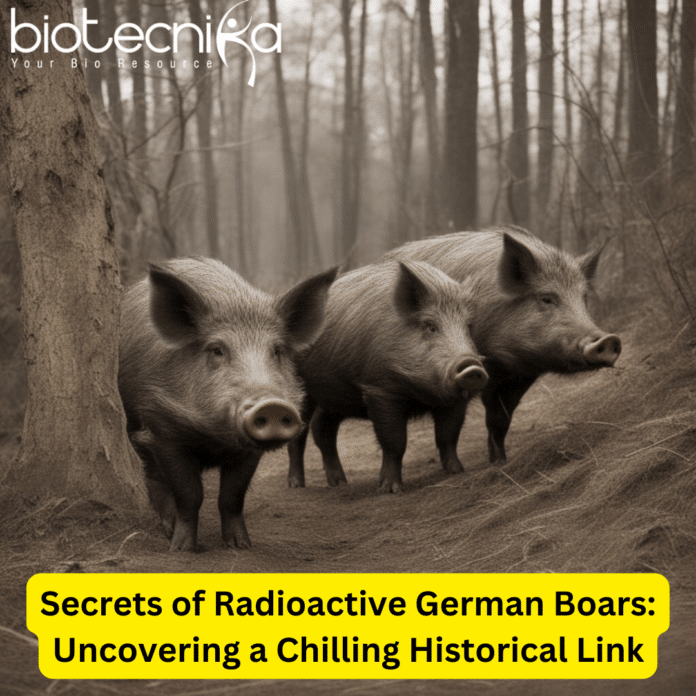Wild boars in the southeastern regions of Germany have garnered attention due to their abnormally elevated levels of radioactive cesium. This situation has frequently been connected to the consequences following the 1986 Chernobyl catastrophe. However, a perplexing situation, known as the “wild boar paradox,” has emerged where the radioactivity remains high in boars while decreasing in other animals.
Recent studies have uncovered surprising sources of radioactivity in these wild boars. While the Chernobyl catastrophe has been a major contributor, new research points to nuclear weapons tests conducted in the mid-20th century as another significant cause. Strikingly, the impacts of both Chernobyl and nuclear weapons testing persist in the boars’ diet, sustaining the contamination.
Wild boars, characterized by their sturdy build and tusks, may seem healthy outwardly. However, certain individuals among them have been found to contain dangerous levels of radioactive cesium. This has led to a decline in hunting these animals for meat and has contributed to the challenge of overpopulation.
Radiation experts, led by radiologist Felix Stäger from Leibniz University Hannover, have delved into the intricate details of this contamination. They emphasize that their research offers a deeper understanding of the radio-cesium issue in Bavarian wild boars, going beyond
simple measurements of radioactive substances.Following nuclear accidents or explosions, radioactive substances can pose significant threats to ecosystems. The Chernobyl catastrophe, which occurred 37 years ago, led to a surge in radioactive cesium contamination, primarily cesium-137 with a half-life of around 30 years. In contrast, cesium-135, a more stable isotope, has a half-life spanning over 2 million years and can be produced through nuclear fission.
Studies have demonstrated that observing the ratio between cesium-135 and cesium-137 can offer valuable information about the source of the cesium contamination. A higher ratio is indicative of nuclear weapons testing, whereas a lower ratio points towards nuclear reactors as the probable origin. To investigate this, the team analyzed 48 samples of wild boar meat collected between 2019 and 2021 from 11 Bavarian regions.

Sophisticated tools, including a high-purity gamma-ray detector and advanced mass spectrometry, were used to assess cesium levels. Astonishingly, 88 percent of the meat samples exceeded Germany’s legal limit for radioactive cesium. Through analysis of the cesium isotope ratio, the scientists approximated that nuclear weapons testing played a role in 12–68 percent of the contamination found in samples that exceeded safe consumption thresholds.
The collected samples exhibited mixed signals, revealing that nuclear weapons fallout and Chernobyl contamination had mingled in the Bavarian soil. These events had release maxima around 20 to 30 years apart, underscoring the complexity of the contamination sources.
While Chernobyl continues to be the predominant source of cesium in wild boars, approximately 25 percent of the samples exhibited notable contributions originating from nuclear weapons fallout. This alone exceeded regulatory limits, without even accounting for the Chernobyl influence. The diets of these boars, which encompass underground truffles, have absorbed differing degrees of contamination from both origins, resulting in their continuous radioactivity. As nuclear power gains traction as a low-carbon energy solution, researchers emphasize the importance of understanding its potential impacts. The study illuminates how past strategic decisions to conduct nuclear tests continue to affect natural environments, wildlife, and even human food sources. The team cautions that future nuclear incidents could exacerbate contamination, posing immediate and long-term food safety concerns.
These revelations have been published in Environmental Science & Technology, offering a comprehensive perspective on the intricate interplay of historical events and their enduring consequences on the environment and wildlife.






























